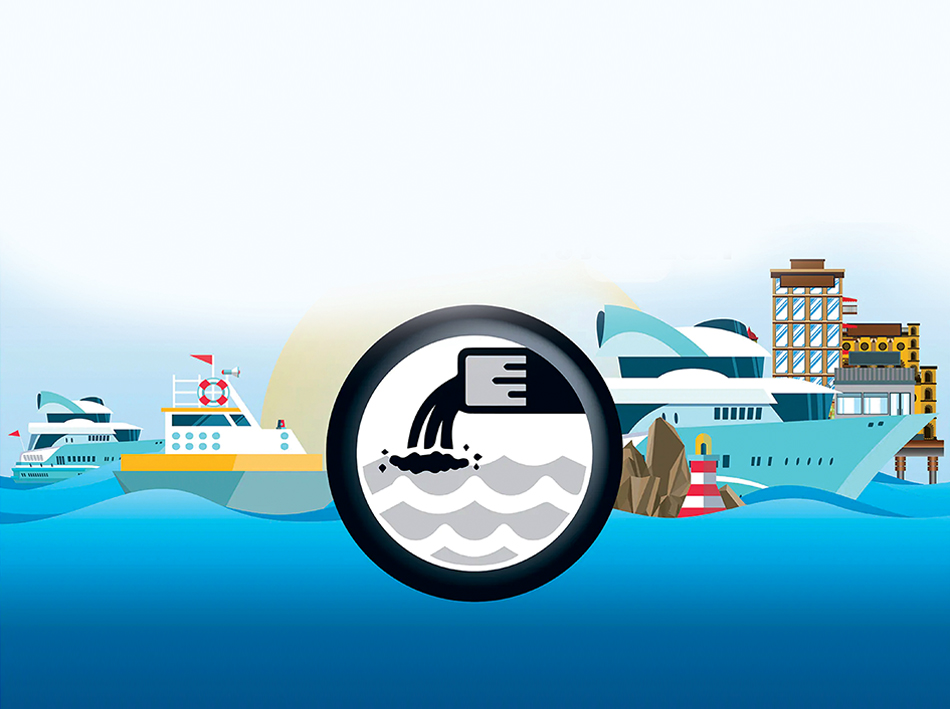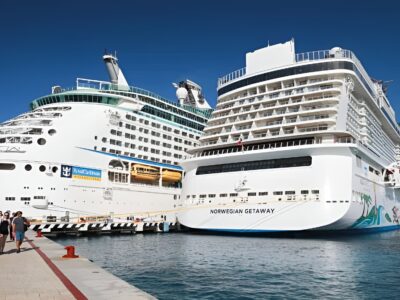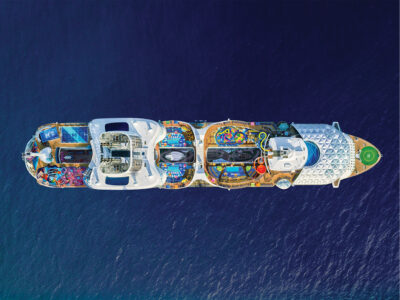
The cruise industry is a major producer of waste, with the total amount of waste generated by a large cruise ship exceeding 1 tonne per day
The year 2023 began on a mixed note for the global cruising industry. While the cruise operators are thrilled with the rapid recovery, that was both faster and broader than expected, January 1, 2023 also marks the onset of a new benchmark for cruise industry.
As per a decision by the International Maritime Organisation, a body of the United Nations which governs the global shipping industry, all large ships will be assigned a Carbon Intensity Indicator (CII), worked out by dividing the total carbon emission of the ship by its capacity of the ship and again by nautical miles travelled. The IMO will henceforth give all ships an A to E sustainability rating. If a ship gets a poor rating, it has to submit a plan for how it will improve to at least a C. However, like most other climate change agreements, there is currently no plan for penalties for badly rated ships or even deadlines for these ships to be retired or modernised.
The move is meant to track emissions of individual ships as part of the shipping industry’s pledge to attain carbon neutrality by the year 2050. Shipping is one of the most polluting industries in the world, responsible for about 2.9 pc of global carbon dioxide emissions, just over a billion tonnes of carbon dioxide annually. Though they are far fewer than other ships in numbers, cruise liners produce more carbon dioxide annually on average than any other kind of ship due to their air conditioning, heated pools and other facilities for passengers.
According to several reports, a large cruise ship can have a carbon footprint greater than 12,000 cars, while passengers on an Antarctic cruise can produce as much carbon dioxide emissions on a seven-day voyage as the average European in an entire year, or an Indian in five years. The cruise industry is also a major producer of waste, with the total amount of waste generated by a large cruise ship exceeding 1 tonne per day.
At the meeting of the IMO, the Cruise Lines International Association sought relaxation of rules, saying that their vessels differ from cargo ships because of the lengthy stays in port that are part of a cruise liner’s existence, typically with engines running to keep the lights on. This time in port hurts cruise ships’ ratings, because they thus emit more carbon per mile.
According to some studies two-thirds of cruise ships leave their engines running overnight while in port to power guest facilities. That affects not only the climate, but also air quality in port cities. According to a 2019 survey, of 50 cities across the world, Spanish city of Barcelona was the best-known and most polluted by cruise ship emissions with sulfur oxides and nitrogen oxides.
Nevertheless, most large cruise operators have announced their sustainability path, with Carnival, the largest cruise company, promising to cut emissions by 40 pc by 2030 and go completely carbon neutral in 2050. Many other cruise operators have also committed to a 2050 timeline.
‘‘We are committed to doing our bit to transition to a low carbon economy. We have a long-term climate action strategy with a commitment to pursue net zero by 2050 across our operations and value chain. A key driver to achieve our net zero ambition is the development of alternative fuels along with the associated critical infrastructure at destinations globally to support the use of these fuels. We are continuously exploring avenues such as partnerships and technologies to champion these efforts,’’ Manoj Singh, Country Head India, Norwegian Cruise Line, tells India Outbound.
‘‘Last year, for example, we joined the Methanol Institute, a global trade association for the methanol industry, which represents the world’s leading methanol producers, distributors, and technology providers, to collaborate, share and adapt solutions for the future. We have also partnered with Man Energy Solutions on a multi-stage feasibility assessment and project with the goal of retrofitting an existing ship engine for use with dual fuels, both diesel and methanol,’’ adds Singh of NCL.
‘‘We are also exploring the use of alternative fuels already available to reduce our GHG emissions. Recently, we completed successful trials of sustainable biofuel blends on board Norwegian Star and Norwegian Epic. The trials on these ships were conducted in collaboration with World Fuel Services and Prio, one of the leading biofuel producers in Europe, using Prio’s EcoBunker 30, a blend of 30 pc of advanced biofuel from waste raw materials and 70 pc marine diesel. We will continue to test and explore how biofuel can contribute to our decarbonisation efforts,’’ says Singh.
‘‘At Resorts World Cruises, we remain committed to sound environment practices in which a high standard of responsibility has been established to preserve the environment in which we operate. These include increasing energy efficiency, conservation of fuel and water, reducing solid waste generation, increasing recycling, protecting marine life and preventing oil pollution. For instance, the Genting Dream is equipped with Eniram trim optimisation, and the exterior hull coating system incorporates the most advanced silicon-based paint to decrease drag in the water and increase fuel efficiency,” Naresh Rawal, Vice President, Sales & Marketing, Resorts World Cruises (India) tells India Outbound.
“Also, our ship uses Exhaust Gas Cleaning System (EGCS) to minimise emissions. In addition, we follow the highest marine industry standard and our biowaste treatment system is equipped with dryers with the ability to incinerate or bag waste materials for offloading and disposal,” says Rawal.
Carnival is the world’s largest cruise ship company, with a fleet of 92 ships that under normal operations carry 13 million passengers annually to 700 ports, nearly half the overall global cruise market. The company is also one of 500 signatories to the Glasgow Declaration on Climate Action in Tourism, which was launched at the COP 26 climate summit in 2021, under which organisations commit to halve their emissions by 2030 and achieving net-zero by 2050 at latest.
“We are reducing the carbon footprint of our ships while at berth and at sea, investing in advanced environmental technologies and partnering with cities and ports on sustainable destination management. By equipping cruise ships with the ability to connect shore side electricity, and using it where available, the cruise industry is prepared to eliminate emissions while at port for the benefit of local communities,” says CLIA.
The CLIA says that cruise lines are currently investing upward of USD 25 billion in new vessels with improved environmental performance. In large part this is to meet new rules from the IMO which came into force in 2020 for the entire shipping industry, slashing the sulphur content of fuel oil from 3.5 pc to 0.5 pc.
CLIA says 76 pc of global cruise ships capacity currently use exhaust gas cleaning systems, known as scrubbers, which meet or exceed air emissions requirements. There is also growing use of LNG, which cuts CO2 emissions by about 25 pc, and contains little sulphur and nitrogen oxide. While only four ships in service are LNG, 52 pc of ships on the order books are scheduled to use the fuel, which CLIA views as a bridge to lower carbon solutions, including biofuels, synthetic fuels, ammonia and methanol.





















